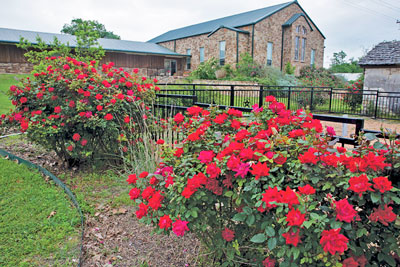Rose Cuttings: December 2014

‘Knockout’ roses on parade at in Central Texas. Photo courtesy of Mike Shoup.
by Mike Shoup
Roses of the Future
For most of the 20th century, modern rose hybridizers focused on giving us beautiful cut flowers and flowers for exhibition. Most of these roses divorced themselves from the garden and landscape. Like gaudy showgirls in one-act plays, they performed a single role: growing in dedicated rose beds. Diversity and sustainability suffered.
In the midst of this trend, however, hybridizers Griffith Buck and Robert Basye had different ideas. Ahead of their time, they bred roses for disease resistance, believing this was the No. 1 issue restricting the rose’s future. Dr. Buck, at Iowa State University, also wanted more cold-hardy roses, so he concentrated on that trait as well. Dr. Basye, at Texas A&M University, thought that pretty flowers, thornlessness and fragrance should be brought back.
Later, David Austin, the prolific British hybridizer, introduced his large-flowered English Roses. His voluptuous creations invited roses back into the garden again. Finally, the public’s desire for easy-care roses was driving the hybridizing industry.
These efforts were followed by William Radler’s industry-changing introductions of the Knockout™ series. Colorful and carefree, they exemplify much of the public demand for roses today. In Europe, Fabien Ducher, Alain Meilland and William Kordes are also breeding new varieties with antique qualities. These are the “old” roses of the future — attractive and resilient enough to be grown by our grandchildren.

